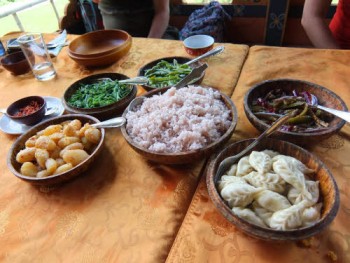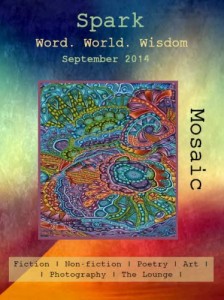by Goutam Bhattacharya
I spent three years of my life on the hills of Eastern Bhutan. As a fresh postgraduate I had joined the ‘Education Department’ at Tashigang Dzongkhag under the ‘Royal Civil Service Commission, Bhutan’, working there from 1990 to 1993. My life and experiences in Bhutan during those three years have always kindled the desire in me to embark on a special literary endeavour – write something like what centre-page articles of famous newspapers are made of. It probably has something to do with the richness and variety of these experiences, including the nature of the poor but amiable hill-folk I had come across. Eccentric, loquacious, gluttonous, woebegone, untidy, moody, alcoholic and so on – an unending list indeed! I had never seen such an amalgamation of humanity before. Their slovenly robes were foetid but their heart, spotlessly clean. Their life and the surroundings can be befittingly expressed by the word ‘pristine’.
Some of the other things that captured my attention there were the desolate life in the small army joint-check-posts amidst the forbidden hills, the mysticism of Shangri-La, the tranquil monks of the remote and lonely monasteries, their occult anecdotes of re-reincarnations, the primitive-lifestyle of the nomadic Brokpaa people, and the ecstatic chhaam, the famous mask-dance of the hill-folk during their festivals – these fascinated me completely.
But what caught my attention the most were the mouth-watering delicacies of the country. Think Bhutanese food and the first thing that comes to my mind is the puffy bondaa. Each time it makes me wonder how this bouncy delicacy reached Bhutan all the way from South India! Maybe the fortune-seeking keralites imported it long back. Nevertheless, Daaju karna’s brasserie provided some really tasty bondaas, all lapped up by children from the nearby school during recess.
I was under a delusion that noodles can’t get better than the Chinese version but thukpaa, the delicious buckwheat noodles of Eastern Bhutan, was no less in comparison. Every other Sunday morning, Indians and other foreign nationals working in that part of East Bhutan would gather at Tshomo aama’s delicatessen for its special thukpaa, particularly the one with toothsome mushrooms. Tshomo aama’s shop was not like a restaurant at all. It was a big, unfinished, traditional wooden house. A massive chunk of rock lay there behind the house. A pretty big wooden press was installed on that rock to squeeze buckwheat-noodles. My first visit was on a drizzling-cold-evening with my colleague, Mr. Gurung, a Nepalese national. The lady at the shop offered us big glassfuls of steaming tea. I was told that the said beverage wasn’t chaa but jaa, the time-tested Tibetan butter tea. In addition to tea, they would concoct leaves of mistletoe and other herbs like myrtle. One has to drink it to believe how effectively the said beverage would give soothing warmth in those cold surroundings of sherchokp-hills.
Momos, or steamed dumplings, also deserve a special mention here. Sold in almost every restaurant, these momos were dumplings filled with boneless pork or beef and used to be one of the most sought-after delicacies. The tasty boneless-meat preparations were concealed within.
I also recall a small triangular area in front of the tshongkhag (shop) of Tshering aapaa, where villagers from the nearby hamlets would bring dozens of fresh orange, apple, apricot, plum and raspberry, Bhutanese-red-rice, buckwheat, maize, known and unknown vegetables, fern-fronds, orchids and yummy mushrooms. The shopkeepers would sell their commodities to these villagers and in return the villagers would barter these items hitchhiked from their respective hamlets.
It may sound rather crazy to savour a literally hot alcoholic beverage. However, there was the steamy-hot shing-chang, which was enjoyed by the hill-folk in certain festivals. During gelid winter they would heat this limpid homemade liquor and pour the contents of chicken-egg very slowly into it. The amazing hot-drink was considered auspicious in their custom. But only spirited souls can enjoy such truly hot-spirit. By the way, the slightly sour home-made-beer, Bang-Chang, was not only tasty but also nutritious for they used malt to prepare it.
No party or picnic was complete without the ecstatic Aemadachhi, a hot but non-spicy curry. Fresh green Bhutanese chilies and cheese were the chief ingredients. It was indeed mouth-watering. But relishing it in a get-together was a perspiring experience.
Whenever I think back to my times at Bhutan, it’s the food that comes to my mind instantly. As someone who loves food, this is hardly surprising. Now after all these years, when I muse over my desire to write a proper center-page article, I begin to wonder if it has to be on Bhutanese food. Coming to think of it, it wouldn’t be a bad idea, after all.
Dr. Goutam S. Bhattacharya was born and brought up in Bishnupur, West Bengal. He has been teaching Biology for the last 22 years.
Pic by Riikka







Excellent piece of writing.
just excellent, it helped me to recollect the days I spent there at the Shangri-La
excellent.. wish i visit the place some time
This write-up takes the reader to the the country, they call Druk Yul. mouth watering dishes indeed…..